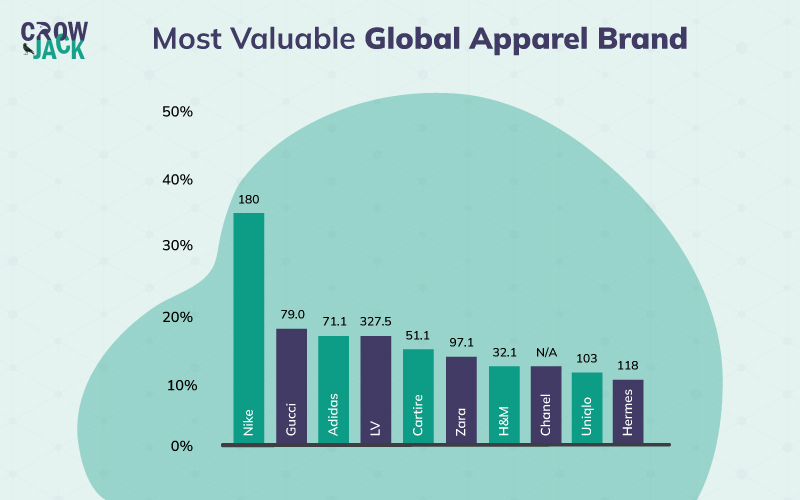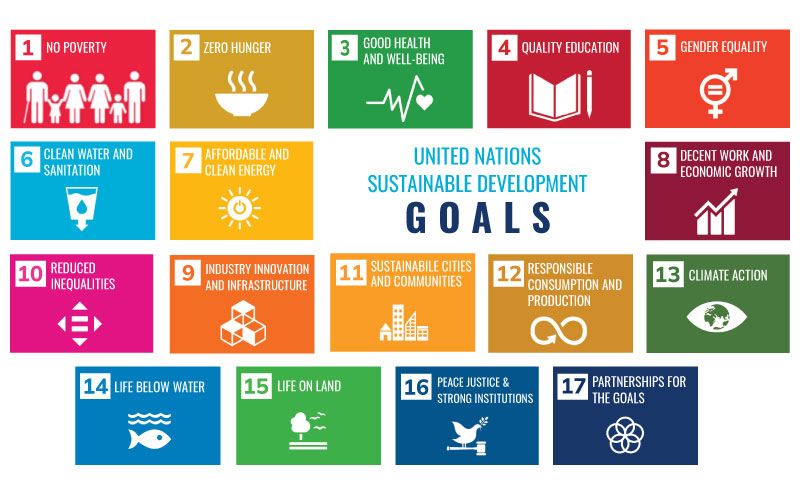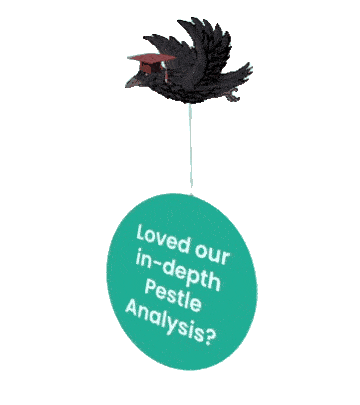Nike Overview
In the global apparel, footwear, and sporting goods industry, Nike holds the stature of a highly popular and preferred brand. The company is headquartered in Eugene, United States, and has a market capitalization worth 221.66 Billion US dollars (Nike (NKE) - Market capitalization, 2022).
The PESTLE analysis of Nike presented in this article highlights the key trends shaping the apparel, footwear, and sporting goods industry with respect to external business factors. The PESTLE analysis looks into the political, economic, social, technological, legal, and environmental factors that have a direct or indirect influence on the industry under consideration.
Table of Contents
Furthermore, an in-depth understanding of PESTLE Analysis will give you a detailed overview of the most important factors in the macro business environment that directly or indirectly impact the operations and growth prospects of a company in a specific industry. As for now, let us get started with the PESTLE Analysis of Nike.
Nike PESTLE Analysis assessing external business factors
Political factors affecting Nike
In the global context, the US, China, and Japan are the biggest markets for the apparel industry (Topic: Apparel Market Worldwide, 2022). Hence, the US will always be a key player in the sporting goods as well as the apparel industry. Although the political environment in the US is stable and the country has Free Trade Agreements with multiple countries and is a part of NAFTA, Trans-Pacific Partnership, and NATO. However, the prolongation of the ongoing US-China trade rift can have significant impacts on the industry with respect to exports of finished goods and imports of raw materials. It is noteworthy that the global apparel and footwear companies are already shifting their factories from China to Vietnam because of the trade war and the availability of cheap labor in Vietnam. Also, Vietnam is a part of 13 Free Trade Agreements (Vietnam Guide - Why Companies Relocate to Vietnam? | Asia Briefing Country Guide Portal, 2022). This underlines a major strategic shift in the industry subject to the geopolitical situation at present.
In the context of emerging markets, China, India, and Vietnam have high levels of corruption which can be a concern for the industry. When there is high corruption, it also leads to higher levels of red-tapism. This can be a roadblock for companies looking to further expand their operations in these countries.
Economic factors affecting Nike

Economies in most parts of the world are rising way back to pre-pandemic economic growth trends. In the global sporting goods industry, the US has the largest consumer market with a revenue generation of USD 54 billion on a yearly basis (Global Sporting Goods Market demand, Size, and Forecast, 2016 to 2023, 2022). As per The Conference Board, the US economy is projected to grow at a robust rate of 3.5 percent in 2022 which is a positive sign for the industry. Both sporting goods and apparel industries rely heavily on key economic indicators that now seem to be recovering from the COVID inflicted downfalls. Another positive economic trend for the sporting industry is that between 2017 and 2022, the US sporting goods industry has witnessed a growth of 5.9 percent (IBISWorld - Industry Market Research, Reports, and Statistics, 2022).
Furthermore, in the context of the apparel and footwear industry, the current global evaluation stands at 1.9 trillion US dollars (Topic: Apparel market in the U.S., 2022). Another key economic factor is the high levels of disposable income in developed and emerging economies are enabling people to buy apparel, footwear, accessories, and sporting goods from premium brands with high prices. Overall, besides the ongoing supply chain issues and related economic losses, other determinants in the economic environment are quite favorable.
Social factors affecting Nike
In the context of global population demographics, millennials, and Gen Z inhabitants account for a dominant component of the global population. Among these generations, the attractiveness of fitness, gymming, and healthy living is increasing. This is a positive trend for the sports, apparel, and footwear industry as the demand for fitness gear and accessories is on the rise with respect to changing lifestyles. Besides, the attitude for premium products from popular brands is also high among these generations who associate great value with global brands.
Another changing trend with respect to the industry is the increasing preference for e-commerce channels. In the United States, the number of online shoppers is anticipated to increase beyond 300 million by the end of 2023 (Online Shopping Statistics You Need to Know in 2022, 2022). Hence, the companies in the footwear, apparel, accessories, and sporting goods industry need to bring more scalable and efficient e-commerce platforms and online shopping experiences to entice more customers.
Moreover, the scope for sustainability is high in the industry and the customers are expecting footwear, apparel, and accessories brands to help them in the bid to preserve the planet. With greater sustainability and innovation, the companies in the industry can emerge as leaders by capturing the changing customer sentiment and capitalizing on the fact that the switching cost is low.
For instance, the leading brands have already started manufacturing sustainable footwear using materials like recycled plastics, natural fibers, coir, pineapple leather, and so on. Also, the leading companies in the industry are now moving to sustainable packaging. These trends will have a major influence on the entire industry and these sustainable innovations will be embraced at a greater scale in the coming years.
Technological factors affecting Nike
The US, China, Germany, Russia, Israel, the UK, and Switzerland are the leading countries that are driving massive positive changes in the global technological infrastructure which is creating an ideal environment for technological innovation across all industries. The global spending on research and development is increasing at a rapid pace and has topped USD 1.7 trillion. Also, most countries have committed to significantly increasing their investments in R&D by 2030 (How much does your country invest in R&D? 2022). Furthermore, the latest technologies in the sporting goods industry include IoT sensors, wearable technology, influencer marketing, digital marketing including SEO strategies, Artificial intelligence, augmented reality, and so on. Besides, in the apparel and footwear industry, the latest technologies include traceability in the supply chain, buy now pay later mechanisms, augmented reality in e-commerce, novel fabrics, data analytics, lean manufacturing, clean and alternative sources of energy, and so on.
To add, wearable technologies are also emerging at a brisk pace. Smart Shoes with chips are emerging as the next big thing in the sporting and footwear industry. With these shoes, people can track their steps on their smartwatches. Such technologies will drive paradigm changes in the industry and will push all key players to shift to these technologies to the earliest to acquire new customers.
Legal factors affecting Nike
The apparel, footwear, and sporting goods industry is closely regulated by broad categories of norms related to anti-competitive activities, employment and labor laws, workplace safety regulations, minimum wages regulations, and other laws that govern the industry. In the US, the industry needs to comply with the Employment and Labor Law 2021 that protects employees’ rights. The National Labor Relations Act is also applicable in the US that enables the recognition of employee unions. The Social Security Act is also a mandate in the US with respect to mandatory employee benefits (Employee Benefits, 2022). Moreover, there are various consumer protection laws and product safety norms that the industry has to follow.
To add, there are pressing issues in the supply chains of the industry in emerging countries. These issues primarily include child labor, slavery, and labor exploitation in countries like India, China, Vietnam and so on which are becoming manufacturing hubs for the industry. There need to be proper regularizations by concerned governments to ensure that these illegal activities are excluded from the industry. Such regularizations will have a positive impact on the industry.
Environmental factors affecting Nike
Greenhouse gas emissions, wastage of water, water pollution, and packaging issues are widespread in the industry. The world is now moving towards sustainability with the view of creating carbon-neutral industries, cleaner alternatives of energy, sustainable apparel, accessories, and sporting goods. Furthermore, the United Nations has laid down a framework of 17 sustainable development goals that the global community needs to meet by 2030. Among these 17 goals, the goals pertaining to climate action, responsible production, clean energy, and protection of ecosystems directly concern most industries.

Hence, most governments are now bringing stricter environmental laws for the industry which are also aligned with the commitments under the Paris Agreement and COP26. In 2021, the United States rejoined the Paris Agreement after withdrawing from it under the Trump Administration.
Further, in the US, the Environmental Protection Agency lays down various environmental regulations that the industry needs to follow. The Clean Air Act, Clean Water Act, Toxic Substances Control Act are some of the major environmental laws in the US under EPA that the industry needs to follow. Furthermore, even the leading companies in the industry are proactively developing sustainable products and packaging alternatives to acquire new customers who are ready to pay premium prices for sustainable products.
To conclude, the apparel, footwear, and sporting industry is undergoing some paradigm shifts largely driven by technological innovations and increasing demand for sustainable products. The global economic indicators are improving after the COVID-19 setback and emerging economies are adapting to modern lifestyles at a brisk pace. This is a positive development for the industry and will benefit the leading companies in terms of expansion in these countries. Also, in Asian countries, cheap labor is available which is a huge benefit for the industry. However, high corruption rates and mismanaged supply chains in these countries can be a challenge. Also, the industry needs to adjust to the stricter legal and environmental norms being set at a global level. Also, to learn about the internal strengths and weaknesses of the company, you can go through our diligent SWOT Analysis of Nike.
Recommended Readings
References
Companiesmarketcap.com. 2022. Nike (NKE) - Market capitalization. [online] Available at: https://companiesmarketcap.com/nike/marketcap [Accessed 12 February 2022].
Statista. 2022. Topic: Apparel Market Worldwide. [online] Available at: https://www.statista.com/topics/5091/apparel-market-worldwide/#dossierKeyfigures [Accessed 12 February 2022].
Asiabriefing.com. 2022. Vietnam Guide - Why Companies Relocate to Vietnam? | Asia Briefing Country Guide Portal. [online] Available at: https://www.asiabriefing.com/countryguide/vietnam/company-establishment/why-companies-relocate-to-vietnam [Accessed 12 February 2022].
Researchnester.com. 2022. Global Sporting Goods Market demand, Size and Forecast, 2016 to 2023. [online] Available at: https://www.researchnester.com/reports/sporting-goods-market-global-demand-analysis-opportunity-outlook-2023/214#:~:text=The%20U.S.%20holds%20the%20largest,Billion%20on%20an%20annual%20basis. [Accessed 12 February 2022].
Ibisworld.com. 2022. IBISWorld - Industry Market Research, Reports, and Statistics. [online] Available at: https://www.ibisworld.com/industry-statistics/market-size/sporting-goods-stores-united-states/#:~:text=past%205%20years%3F-,The%20market%20size%20of%20the%20Sporting%20Goods%20Stores%20industry%20in,average%20between%202017%20and%202022. [Accessed 12 February 2022].
Statista. 2022. Topic: Apparel Market Worldwide. [online] Available at: https://www.statista.com/topics/5091/apparel-market-worldwide/#dossierKeyfigures [Accessed 12 February 2022].
OptinMonster. 2022. Online Shopping Statistics You Need to Know in 2022. [online] Available at: https://optinmonster.com/online-shopping-statistics [Accessed 12 February 2022].
2022. How much does your country invest in R&D?. [online] Available at: http://uis.unesco.org/apps/visualisations/research-and-development-spending [Accessed 12 February 2022].
Justia. 2022. Employee Benefits. [online] Available at: https://www.justia.com/employment/employee-benefits [Accessed 12 February 2022].

 Proof Reading
Proof Reading  Copy Writing
Copy Writing  Resume Writing
Resume Writing  Blogs
Blogs Guides
Guides SOP's
SOP's Student Resources
Student Resources Research Topics
Research Topics Login
Login Register
Register



